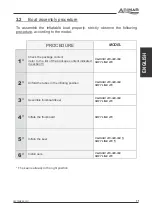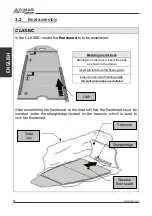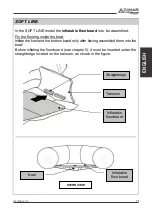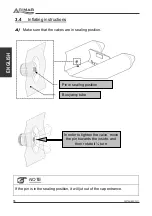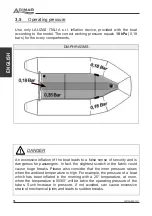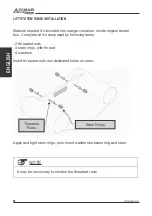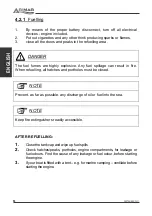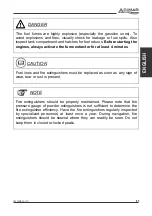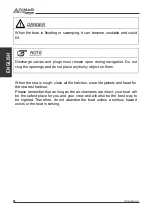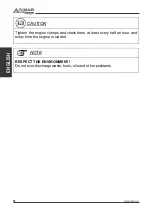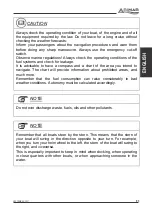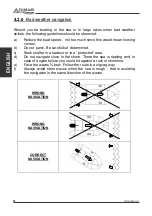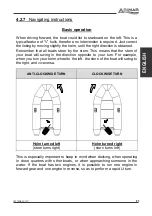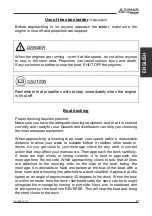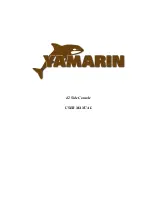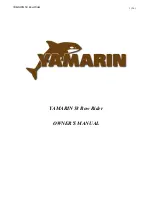
85
SEPTEMBER 2021
ENGLISH
4.2.1
Fuelling
1.
By means of the proper battery disconnect, turn off all electrical
devices - engine included.
2.
Put out cigarettes and any other think producing sparks or flames.
3.
close all the doors and peaks in the refuelling area.
DANGER
The fuel fumes are highly explosive. Any fuel spillage can result in fire.
When refuelling, all hatches and portholes must be closed.
NOTE
Prevent, as far as possible, any discharge of oil or fuel into the sea.
NOTE
Keep fire extinguishers readily accessible.
AFTER REFUELLING:
1.
Close the tank cap and wipe up fuel spills.
2.
Check hatches/peaks, portholes, engine compartments, for leakage or
fuel odours. Find the cause of any leakage or fuel odour, before starting
the engine.
3.
If your boat is fitted with a tent – e.g. for marine camping – ventilate before
starting the engine.
DANGER
The fuel fumes are highly explosive (especially the gasoline ones). To
avoid explosions and fires, visually check for leakage or fuel spills. Also
inspect tank compartment and hatches for fuel odours.
Before starting the
engines, always activate the fume extractor for at least 4 minutes
CAUTION
Fuel lines and fire extinguishers must be replaced as soon as any sign of
wear, tear or rust is present.
NOTE
Fire extinguishers should be properly maintained. Please note that the
pressure gauge of powder extinguishers is not sufficient to determine the
fire extinguisher efficiency. Have the fire extinguishers regularly inspected
by specialized personnel, at least once a year. During navigation, fire
extinguishers should be stowed where they can readily be seen. Do not
keep them in closed or locked peaks.

